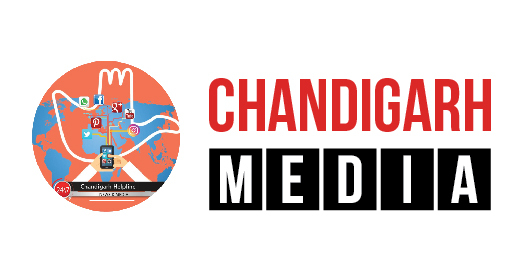A fresh conflict has erupted between microblogging platform X (formerly Twitter) and the Government of India over content regulation and censorship after the company claimed that over 2,300 accounts, including global news agency Reuters, were ordered to be blocked in India.
The incident has reignited debates on press freedom, intermediary liabilities, and the scope of Section 69A of the Information Technology Act, with both parties issuing contradictory statements about the July 3 directive.
X Alleges Sudden Government Directive to Block 2,300+ Accounts
In a public post by its Global Government Affairs team, X claimed that the Ministry of Electronics and Information Technology (MeitY) issued an urgent blocking order on 3 July 2025 under Section 69A of the IT Act, compelling the platform to block 2,300+ accounts indefinitely. The directive reportedly included verified accounts like @Reuters and @ReutersWorld, sparking immediate outcry from digital rights activists and global media watchdogs.
The platform alleged that the order came without specific justification and with a one-hour compliance deadline, violating procedural fairness and freedom of speech norms.
Public Outcry and Reuters’ Unblocking
X stated that public backlash and media coverage led to a reversal of the order concerning Reuters. On Sunday, July 6, MeitY allegedly reached out to X to request restoration of Reuters handles, which were unblocked for Indian users later that same day.
However, X emphasized that this event reflects a larger pattern of increasing content censorship in India and announced it is exploring legal options to protect free speech on the platform.
Government Denies Issuing New Blocking Order
In response, MeitY issued an official statement denying any new blocking order on July 3. The ministry clarified that it had not issued any fresh directive involving Reuters or the claimed 2,300 accounts.
Rather, the ministry asserted that as soon as it became aware of the Reuters handles being blocked in India, it contacted X on July 5 requesting their immediate restoration. MeitY also criticized X for delaying action, claiming the accounts were only unblocked on July 6 at 9 PM, nearly 21 hours after communication began.
Legal Faceoff in Karnataka High Court
The controversy comes amid an ongoing legal battle between X and the Indian government. The company had already filed a petition in the Karnataka High Court earlier in March 2025, challenging the constitutionality of several blocking orders issued under Section 69A.
X’s amended petition now seeks to invalidate Rule 3(1)(d) of the Information Technology (Intermediary Guidelines and Digital Media Ethics Code) Rules, 2021, which empowers the government to instruct intermediaries like X to take down content or block accounts.
In its legal argument, X maintains that these orders lack sufficient safeguards, are opaque, and violate fundamental rights of users, particularly freedom of expression and press freedom.
Press Freedom Concerns Rise
The inclusion of Reuters, one of the world’s most trusted news agencies, in the reported block list has alarmed many. Critics argue that blocking global news outlets under opaque laws sets a dangerous precedent.
X noted:
“We are deeply concerned about increasing censorship pressures in India. Blocking internationally recognized news sources raises questions about due process and transparency.”
Digital rights organizations like Internet Freedom Foundation and Access Now have called for greater oversight and judicial review of content takedown orders, especially when they involve media entities.
Background: X and Government’s Ongoing Tensions
This is not the first clash between X and the Indian government. In May 2025, the handle of X’s own Global Government Affairs team was blocked in India following a similar takedown order, only to be restored 24 hours later.
Earlier, in 2023 and 2024, X had received orders to block thousands of accounts, particularly around farmers’ protests, communal violence content, and election-related narratives. The company has expressed concern about compliance under pressure, especially under threat of criminal penalties for its executives.
Section 69A and Rule 3(1)(d): The Legal Battle Lines
At the heart of the dispute are two key legal provisions:
-
Section 69A of the IT Act (2000): Empowers the Central Government to block public access to any information on the internet in the interest of sovereignty, public order, or security.
-
Rule 3(1)(d) of 2021 IT Rules: Mandates intermediaries to comply with government takedown orders and grants the government power to issue such directives without judicial oversight.
X argues that Section 79(3)(b) of the IT Act — which provides conditional legal immunity to intermediaries — does not grant the government unqualified authority to demand takedowns without sufficient procedural checks.
What’s Next? Awaiting Judicial Review
The Karnataka High Court has agreed to hear X’s amended petition, and legal experts believe the case could set significant precedent for how digital platforms are regulated in India.
If the court finds fault in the non-transparent execution of takedown orders or the overreach of MeitY’s powers, it could trigger a review of the IT Rules, potentially reshaping how content is moderated in the world’s largest democracy.
Conclusion: Governance or Gagging?
As India continues its digital transformation, the balancing act between national security and free expression remains under intense scrutiny. The X-Reuters episode shows the fragility of digital rights, especially when global platforms, sovereign policies, and public opinion collide.
For now, all eyes remain on the Karnataka High Court — and the next directive from MeitY.


